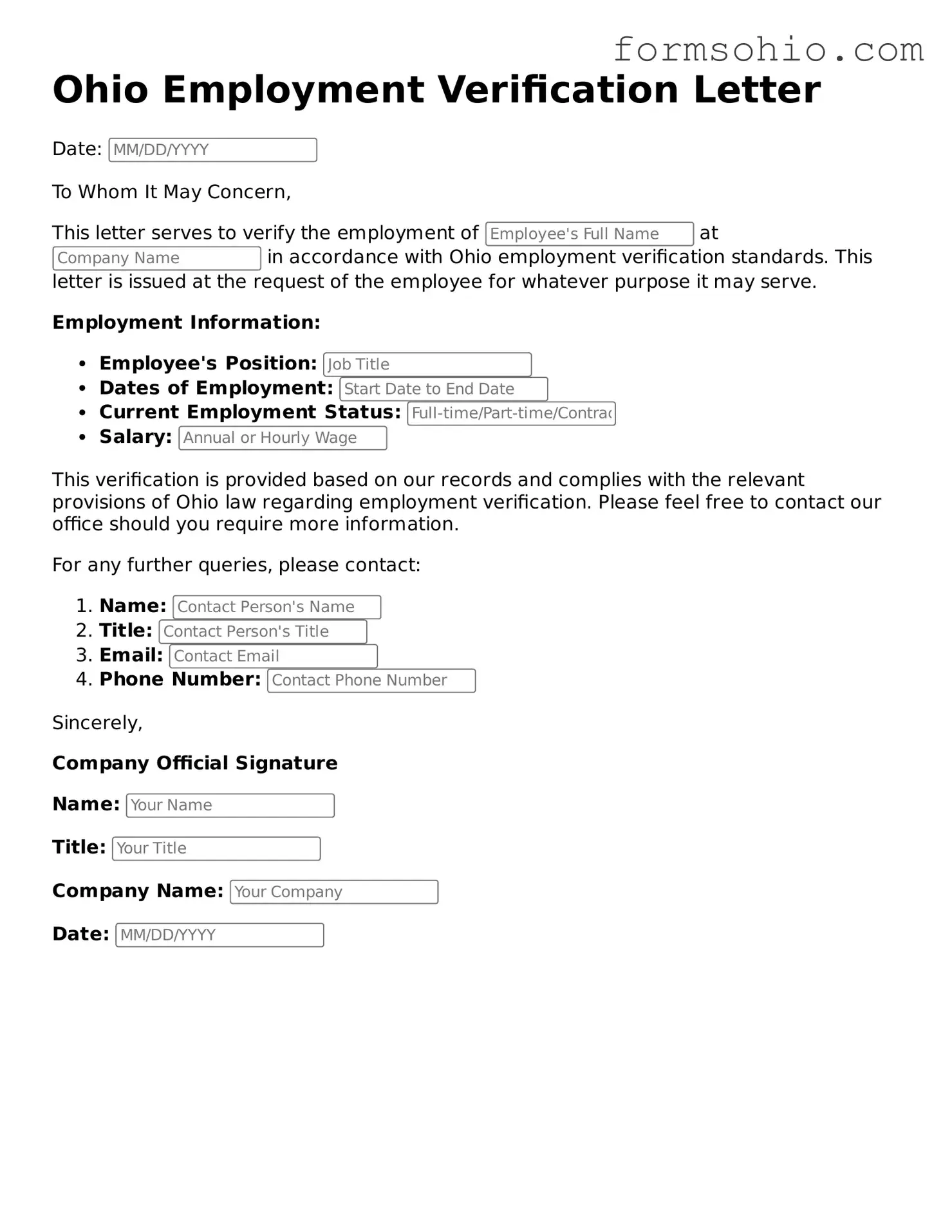Printable Employment Verification Template for the State of Ohio
The Ohio Employment Verification form is a document used by employers to confirm an employee's job status, salary, and other relevant employment details. This form plays a crucial role in various situations, such as loan applications or background checks. Understanding its purpose and how to properly complete it can streamline the verification process for both employers and employees.
Get This Document Online
